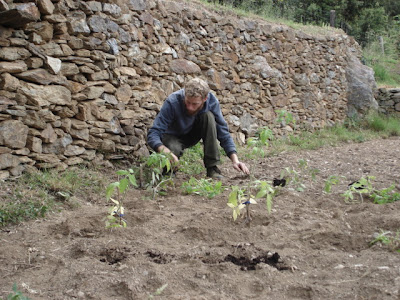I'm once again doing a re-blog, but have full intention to be back on Monday. Work in the house ran into an unexpected hiccup in the form of a broken water pipe. Need to say, it needed my attention along with a bucket, a mop, and lots of rags. Details to follow soon, but until then, watch for these in the garden.
Orignal post July 1, 2011
Ever reach down to pull out a weed in the garden and think you’ve just got bitten by a viper? If so, then you know about stinging nettle, or ortie, as it is called in French. It grows in the region and some has found an unwelcomed home in our vegetable garden. I’ve never seen it before, so I was very unpleasantly surprised when the weed I unearthed bit me back. I found out the little hairs that cover the plant act like tiny hypodermic needles and injects chemicals into whoever touches it and that is what causes the burning, screaming, swearing, and oh, yes, blistering. Christophe chops it down each year with an industrial size weed-wacker, but it keeps coming back. For those who are crazy enough, certain varieties of stinging nettle can be eaten painlessly, but I’m not willing to take that risk. We have, however, have found it to be a good fertilizer. The weeds ferment in water for two weeks, are removed, and then the green mixture can be diluted with water for occasional use. It does work, but the smell of the fermented mixture is not for the weak stomached.
Stinging nettle: a new experience for me, albeit, an unwanted one. It makes me pine for the poison ivy summer filled days. Oh, how I miss thy.




























